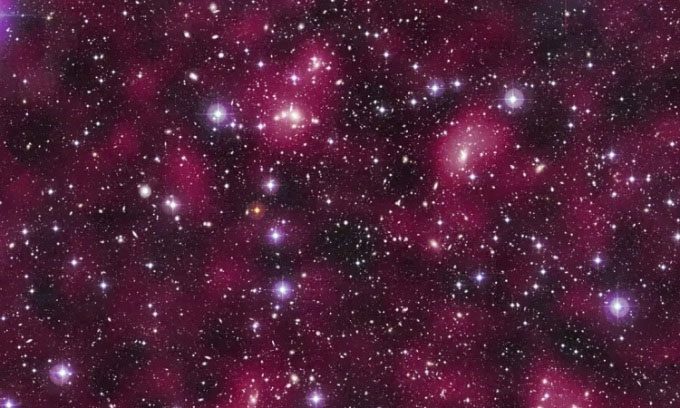British Scientists Plan to Place Giant Particle Detector Nearly One Kilometer Underground in a Mine in Yorkshire.

A supercluster of galaxies captured by the Hubble Space Telescope, where dark matter is believed to exist in the areas marked in pink and purple. (Photo: Alamy).
The new detector will be constructed at Boulby, North Yorkshire, where scientists have established an underground research center to conduct a series of experiments on materials, environments, and various other topics, the Guardian reported on August 6. Some of the initial efforts to detect dark matter particles have also taken place here. The detector will provide an opportunity to determine the origins of one of the universe’s greatest mysteries: dark matter, according to Professor Chamkaur Ghag, a physicist at University College London.
Scientists know that the universe contains much more matter than can be directly detected, as they observe galaxies existing in clusters. There is certainly matter producing additional gravitational forces that help maintain these galaxy clusters. But what is this mysterious dark matter made of? After ruling out all possibilities, most researchers conclude that a type of relatively weakly interacting massive particle known as WIMPs (Weakly Interacting Massive Particles) is responsible. These subatomic particles are likely the source of dark matter, which accounts for about 85% of the universe’s mass.
However, WIMPs rarely interact with ordinary matter, prompting researchers to design increasingly sensitive detectors to search for them. The goal of the detector is to capture flashes that may occur when WIMPs collide with the nuclei of xenon atoms. Despite placing the devices deep underground, where they are protected from cosmic rays and particles colliding with the surface, researchers have yet to detect any WIMPs after two decades of searching.
According to Ghag, as the detectors reach a certain sensitivity in future generations, the signals they may be able to capture from WIMPs could easily be confused with signals from other particles, such as neutrinos. This limitation is referred to as “neutrino fog.”
“The next generation of detectors will not be the final models developed, but as we move closer to the neutrino fog, detecting WIMPs will become even more challenging,” said Professor Sean Paling, director of the Boulby Underground Laboratory. Currently, several research groups are searching for WIMPs at various locations, including mines in South Dakota, as well as centers in Italy, China, and Japan. Last week, the research team in South Dakota reported they found no evidence of WIMPs in their detector experiments.


















































